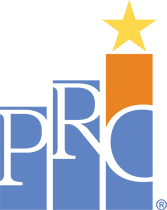How to ask, “What could I have done differently” for better healthcare
Trepverter: a Yiddish word for when you know exactly what you want to say to someone…hours after the conversation has ended. Literally, “words that arrived too late,” this sensation sits in our minds near the French l’espirit de l’escalier—the spirit of the staircase. Because while you wouldn’t run back up a flight of stairs to get in the perfect retort, you would dwell on what could have gone differently if perhaps you had.
It’s human nature to reflect and ask yourself what you can do differently, but it’s critically important to do so thoughtfully. Often, clients wonder why PRC doesn’t just ask patients, “what could we have done differently to provide ‘excellent’ care?” After all, if excellence is the measurement goal, why not just ask patients how to get there? Would that not be the most direct path to success?
The trouble with asking patients what could have made their stay more excellent is that patients often don’t know what makes a hospital excellent until they experience it. They likely know what they did and did not like—and have shared such sentiment in other sections of the survey—but to identify on their own that which makes an overall stay excellent is a horse of a different color.
Unlike the open-ended questions, “During this hospital stay/visit, was there anything that you feel was outstanding?” and, “What could have been done to improve your hospital stay/experience?” asking broadly about excellence implies that expectations were exceeded, that the patient was unexpectedly delighted by their experience. Asking a patient to tell you what they would find to be unexpectedly delightful is akin to asking your friend to plan her own surprise party.
Put another way, excellence happens when the things that mattered most to the patient were delivered well, even though other less important elements might have been missed. Most patients haven’t clearly defined to themselves what would have mattered most to them in that experience. They feel when you did and didn’t deliver those important things, but since most haven’t ponder the topic for themselves, they can’t easily articulate it when put on the spot in a post-experience survey.
It’s also worth noting that, in the past, PRC included this question in surveys and it often elicited an “I don’t know response.” On the rare occasion a patient did provide a specific answer, this was typically the same response they gave when asked if there was anything they’d like to improve about their care, creating duplicate data.
But if asking patients to respond to an open-ended question about excellence adds little value to the existing data, what can you do to find opportunities for regular improvement? While patient survey data is a great resource for understanding trends and getting a grasp of overall performance, it’s just one facet of the ways to gain insight into the patient experience. In reality, a survey question is not the most effective resource for capturing the nuance you will uncover through conversation both with your patients and within your organization.
Effective rounding, on the other hand, provides the unique opportunity to learn from patients about what they feel could make a particular aspect of care excellent. In dialogue, patients can more effectively share examples of the excellence (or lack thereof) they saw from their care team. Listening to these stories allows you to develop a stronger sense for how patients define an excellent experience for that aspect of care. Asking a few questions face to face and engaging in conversation goes a long way into gaining insight into how your patients define excellent care, while simultaneously building relationships with your patients by showing that you care about not just their health, but also their care experience.
Another approach which can be used to great affect is finding performance champions by using the Rankings application on PRCEasyView.com. This tool identifies both those units in your organization that are in the top ten percent and those units which have made the greatest improvements. By examining a twelve-month span of data, you can see your highest scoring units (we recommend looking to see who is in the 90th percentile or above, if possible). By looking at two years of data, you can clearly identify the units that have made the biggest gains in scores from one year to the next. Use this data to begin conversations: what have they focused on improving? What are their best practices?
Through these constructive conversations, you’ll harvest invaluable insights from both your patients and the ones who work closely with them. By developing a dialogue and data-based practices for understanding what you might have done differently, you will eventually find yourself spending less time with the spirit of the stairs and more time thinking forward, armed with thoughtful interpretation of the past.


